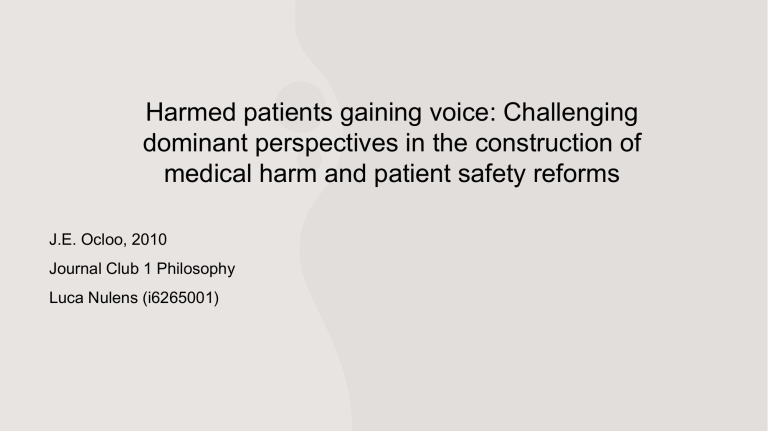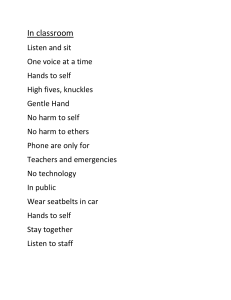
Harmed patients gaining voice: Challenging dominant perspectives in the construction of medical harm and patient safety reforms J.E. Ocloo, 2010 Journal Club 1 Philosophy Luca Nulens (i6265001) The case: • Patient safety and reducing medical harm are the main topics of the study • Study gathers evidence from self-help groups (Medical Harm Self-Help Network) + data from patients affected from harm (BreakThrough Programma) • 18 questionnaires and a written narrative account of patient experiences and observational data were gathered from workshops • Medical harm focuses on clinical markers and obsures social processes (addressing these helps gathering knowledge which leads to a broader framework to address safety of the patient) The problems patients in “your” case set out to solve - The main problem of the case is patient safety in healthcare - Avoidable medical care is the major concern - On average, 10% of hospital admissions result in a PSI (Patient Safety Indicators) - Patient is not recognized as a stakeholder in decision making but as a passive receiver of care Why do these problems occur? 1. Patients trust the medical professionals blindly and do not question treatment until harm is occurred 2. Patient safety movement is increasing over the years Solutions offered by patients: - Emphasis on the ‘embodied’ personal experiences (inform patients) - Reduce the barriers after medical harm occured - Voice gaining of harmed patients and contributions to the development of patient safety reforms + raising questions about the control, dominance and power of the medical profession - From the experiences: - More holistic approach is needed - A more perspective/cultural shift is emphasized - Wider perspective is needed Reflection • There is a shift from top-down relationship to bottom-up • The patient should not be seen as solely a passive receiver of care but as an active stakeholder • Health care systems are usually based on medical evidence but should embrace both medical and social processes • It is important to look at ‘harm’ in a broader contextual framework


